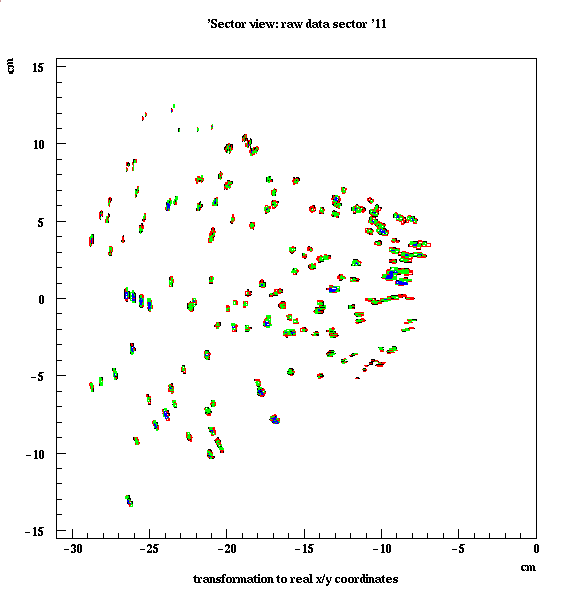
| fss_( | |
| *g2t_track_h, *g2t_track, | geant tracks (input data) |
| *g2t_ftp_hit_h, *g2t_ftp_hit, | geant ftpc hits (input data) |
| *fss_param_h, *fss_param, | fss runtime parameters (parameters) |
| *fss_gas_h, *fss_gas, | fss gas property and ExB table (parameters) |
| *fcl_padtrans_h, *fcl_padtrans, | fcl gas property and ExB table (parameters) |
| *fcl_ftpcndx_h, *fcl_ftpcndx, | indices to beginning of tpcs (output data) |
| *fcl_ftpcsqndx_h, *fcl_ftpcsqndx, | raw data sequence indices (output data) |
| *fcl_ftpcadc_h, *fcl_ftpcadc, | raw data adc values (output data) |
| *fcl_det_h, *fcl_det, | geometry and runtime parameters from fcl (parameters) |
| *fcl_zrow_h, *fcl_zrow) | z positions of all padrows (parameters) |
The FTPC slow simulator is implemented in both STAF(fss) and ROOT(St_fss_Maker).
It was written in C++ by Wen Gong and is supported by Janet Seyboth and Holm Hümmler.
Its principles can be seen from Wen Gong's description of ftpcsim , an earlier, standalone version used for testing.
In the long run, the FTPC-group aims to replace fss with a new program derived from the Tpc Response Simulator, thus making full use of the object oriented framework.
The following is a visualization of the simulated raw data generated from a normally populated hijing event in one sector. The data has been transformed to the real x/y-coordinates in the chamber, in cm:

This page was updated by Holm Hümmler on March 7, 1999